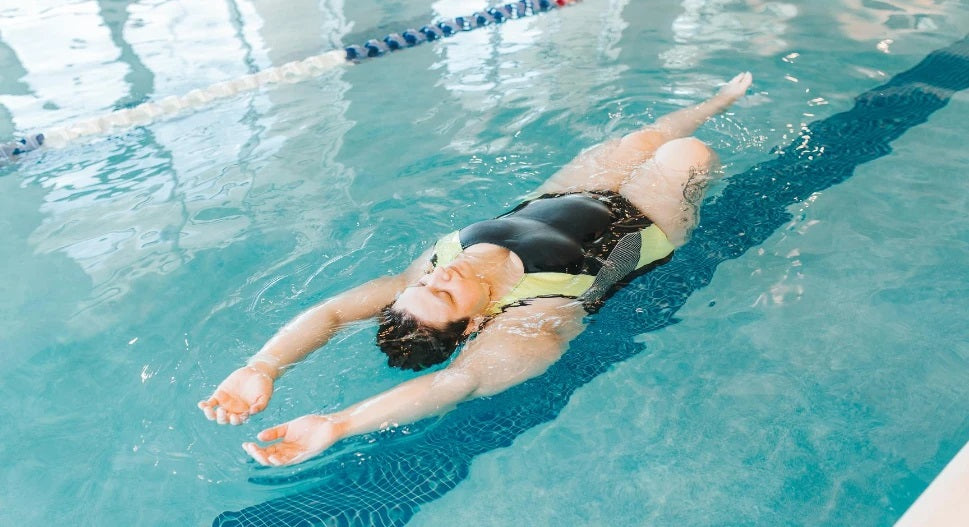Words by Lauren Hughes

Quarantine forced a lot of us to change the way we exercise. But now that lockdown is easing and we are adjusting to the ‘new normal’ way of life, many of us will stick with our new ways of working up a sweat.
The biggest change to how we exercise is that so many of us have taken our workouts outdoors instead of to the gym, so it is essential to be even more diligent with SPF to protect against ageing UVA rays and UVB rays that burn the skin. If you sweat a lot during exercise, it is best to opt for a waterproof SPF and it should be applied 20 minutes before going outside. My favourites are from UltraSun and La Roche Posay.
Here are my top tips for protecting your skin and reducing skin irritation while cycling, running, swimming, home workouts or if you are heading back to the gym:

CYCLING
There was a huge increase in the number of people taking up cycling during lockdown to see friends and that is set to continue as people cycle to work instead of their pre-lockdown tube, train or bus commute.
If you are now cycling regularly, then it is very important to keep the inside of your helmet clean. Sweat, oils and dirt will collect on the inside rim from your hair and will then end up on your forehead, potentially causing irritation and breakouts so make sure you are cleaning it regularly.

RUNNING
Running is a great stress reliever and an easily accessible form of outdoor exercise. As such it became very popular throughout quarantine. Running can often cause an increase in breakouts on the body though, usually on the back and booty, because of the friction created by clothing mixed with sweat, oils and bacteria. These four tips will go a long way to reduce the irritation to your skin:
- Shower as soon as you get home from your run.
- Use a salicylic cleanser on breakout-prone areas.
- Opt for breathable materials.
- Wash your workout clothes after every sweat session.
Both cycling and running outdoors exposes the skin to high levels of pollution, particularly if you live in a city. Apply an antioxidant serum under your moisturiser and SPF, such as the Neostrata Skin Defense serum or Medik8 C-Tetra serum. These provide extra protection by scavenging free-radicals.

SWIMMING
If you have taken up swimming instead of going back to the gym, it is important to take extra steps to protect your skin. Prolonged water contact, particularly chlorinated water, damages your protective skin barrier, which results in the skin feeling tight and dry after swimming.
To prevent damage to the skin barrier happening in the first place, try incorporating these steps into your swim routine:
- Apply a generous amount of ceramide-rich moisturiser to the skin before getting in the water, such as the CeraVe Moisturising Lotion
- If you are open water swimming or visiting your local lido, wearing plenty of waterproof SPF is a must
- Wash the skin with a gentle cleanser immediately after coming out of the water to remove any chlorine and then reapply the moisturiser
HOME WORKOUT CLASSES
Instagram and YouTube have been brilliant resources for online workouts and yoga classes throughout lockdown (who else loved The Sports Edit Instagram workouts?) and I am definitely going to continue doing workouts from home.
We all expect equipment at the gym to be cleaned thoroughly and regularly, but we perhaps forget to clean our own equipment at home as much as we should. Yoga and exercise mats in particular need a thorough wipe down with antibacterial spray regularly or when you are in child’s pose during your yoga session, that bacteria will end up on your forehead! But also remember dumbbells, resistance bands, stability balls and any other equipment you touch regularly.

WHAT IS “MASKNE”?
If you are planning on going back to the gym and workout classes, some venues will recommend that you wear a face mask. Face masks are wreaking havoc with people’s skin, a phenomenon dubbed ‘maskne’. Face masks trap moisture, sweat and bacteria on the skin, which inevitably clogs the pores and leads to breakouts and irritation on the cheeks and chin.
3 Tips for Avoiding Maskne
There are several steps you can take to reduce the irritating effects and appearance of maskne:
- Choose a machine-washable face mask made of a breathable material, such as cotton or silk, to reduce the amount of moisture being trapped between the mask and your skin. I would advise having a few face masks on rotation so that you can wear a clean one each day while the others are in the wash.
- Find a face mask that fits your face well to avoid friction, which can cause irritation. If you are experiencing irritation from wearing a face mask, reduce the amount that you are exfoliating with acids or scrubs in your skincare routine.
- Use Clinisept - an antibacterial, antifungal, antiviral, antisporal spray that will be your new best friend if you are suffering with maskne. It is a PH neutral solution so it does not disrupt the skin barrier. It comes in a spray bottle and is very easy to spray on just about anything! It is designed to spray directly on your skin so it is perfect for fighting maskne! Spray the Clinisept on your face and on the mask every time you put it on to kill the bacteria.
CONCLUSION
As we continue to adjust to a new normal, many of us will continue the exercise routines we started in lockdown. It's been a stressful time for everyone, and your skin isn't immune to the side effects of this new lifestyle! Use guide to help reduce skin irritation after your new exercise routine, and avoid unpleasant maskne by working in these tips into your skincare regimen.






























































